Journal of the NACAA
ISSN 2158-9429
Volume 11, Issue 2 - December, 2018
Why Aren't Calf Management Records Kept by More Beef Producers?
- Raper, Kellie Curry, Associate Professor and Livestock Economist, Department of Agricultural Economics, Oklahoma State University
Doye, Damona, Rainbolt Chair of Agricultural Finance, Regents Professor and Extension Economist, Oklahoma State University
Derrell Peel, Breedlove Professor and Livestock Economist, Department of Agricultural Economics, Oklahoma State University
ABSTRACT
To increase ranch profitability, extension programming needs to be directed to producer needs. Better knowledge of producer-identified constraints to record keeping on calf birth and health can facilitate more targeted outreach efforts regarding the value of such record-keeping endeavors. Analysis of potential barriers is crucial to extension programming in that it allows educators to pinpoint practice adoption deficits and structure programming to fit specific needs. Overall, the results suggest a strong need for extension programming that educates producers specifically on what information is important to document, how to document it, and how to use that information to improve decision making and, ultimately, profitability.
Introduction
The sustainability of beef operations depends on being efficient and profitable. Production efficiency is enhanced when producers can compare their performance to benchmarks and evaluate the impacts of changes in management practices using standard measures. Production records are essential to monitor whole herd productivity on a year to year basis as well as individual animal performance (Waters, 2012). Good production records are the first step toward evaluating the economic impact of specific management decisions, such as a shortened calving season or using a bull projected to yield higher weaning weights, for example (Dalsted and Gutierrez,1991), Extension personnel regularly promote the importance of specific management practices to producers, including record keeping. Management records provide important input to improved cow-calf decision making, marketing options, and ultimately, profitability, yet producer adoption lags. Management practices typically promoted for the cow-calf phase of beef production are those that positively affect health and performance in subsequent phases of production, that document information such as age, origin, feed ingredients, or medical treatments for use in herd management decisions, or that meet needs for specific marketing strategies. Recommended record-keeping practices generally include financial, production and herd health records.
National Animal Health Monitoring System (NAHMS) data show that the majority (83.3 percent) of beef producers keep some form of records, with more than 90 percent of operations with 100 or more cows keeping them (USDA APHIS, 2011). Both animal identification and natural resource condition records were more prevalent on larger operations. NAHMS results, however, do not identify other more specific recordkeeping practices.
Watt et al. (1991) found that producers with herds of 100-199 beef cows were more likely to document animal health records, sire and dam of offspring, and birthdates of offspring than operators with 50-99 cows or more than 200 cows. In questions about the importance of farm records, survey respondents named culling decisions, tax planning and profitability analysis as the most important uses of farm records. Some differences were noted between producers with 100-199 beef cows compared to both smaller and larger herds, with this group assigning higher importance to records for supporting decisions related to health program/disease prevention (3.72 on a scale from 1 to 5, with 5 as high), producing versus purchasing hay (3.33), and how/where to market animals/products (3.57).
Williams et al. (2013) found that fewer than 30% of Oklahoma producers surveyed reported keeping calf birth and health records. They also found that participation in producer education programs regarding value-added practices resulted in an increase in the number of recommended practices adopted by individual producers. Participants in these programs likely have greater exposure to information regarding implementation of value-added practices and the associated benefits. This finding validates the importance of targeted educational programming that relays research findings and communicates the value of various management practices.
Better knowledge of producer-identified constraints to record keeping can facilitate more targeted outreach efforts regarding the value of such record-keeping endeavors. Analysis of potential barriers is crucial to extension programming in that it allows educators to pinpoint practice adoption deficits and structure programming to fit specific needs. To increase ranch profitability, extension programming needs to be directed to producer needs.
The focus of this research is calf birth and health records. The objectives of this article are to:
- summarize producer implementation of record keeping related to calf birth and health records, and
- identify producer perceptions of constraints to calf related record keeping.
Methods
A survey of Oklahoma cow-calf producers solicited information regarding producer adoption of specific management and marketing practices (Raper et al., 2010). Practices included in the survey can be broken down into four categories: basic (castration, dehorning, deworming); preconditioning (bunk training, vaccination protocol, 45-day weaning); marketing (age and source verification, no antibiotic use); and calf management records (vaccination records, other medical records, calf birth dates, individual calf identification). The initial survey was refined after a pretest with extension personnel and selected producers. Survey sampling, mailing and data collection was done through the United States Department of Agriculture's (USDA) National Agricultural Statistics Service (NASS) Oklahoma City office. A total of 17,511 surveys were mailed, covering over half of the state's cow-calf operations (USDA NASS 2014). The survey was promoted pre- and post-mailing by extension, in news releases, and at multiple state, regional, and county meetings. A total of 1453 usable surveys were completed statewide. The similarity in Oklahoma cow-calf operator demographics among 2007 Census of Agriculture respondents, previously published survey research, and our survey respondents indicates that the data are representative of Oklahoma cow-calf producers.
Results and Discussion
Figure 1 illustrates adoption rates for management practices across each of the four categories, including basic, preconditioning, marketing, and calf management records. Basic practices (castration of bull calves prior to marketing, dehorning horned animals, and deworming) are adopted at the highest rate among producers. Just under half (49%) of producers dehorn calves prior to marketing while 72% report that they castrate male calves prior to marketing. Preconditioning practices are those practices that when bundled together with basic practices allow calves to be marketed as preconditioned and are adopted at a lesser rate than basic practices. Half of producers reported bunk training calves, while 45% of producers implement a 45-day weaning period. Only 36% administer two rounds of respiratory vaccinations prior to marketing calves. Adoption rates for calf management records included in the survey are universally low compared to adoption of basic and preconditioning practices, with adoption rates of less than 30% for each calf management record keeping practice listed. Marketing practices are those practices implemented specifically for a defined marketing program (e.g. age and source verification or no antibiotic use) and, as expected, have the lowest adoption rates relative to other categories.
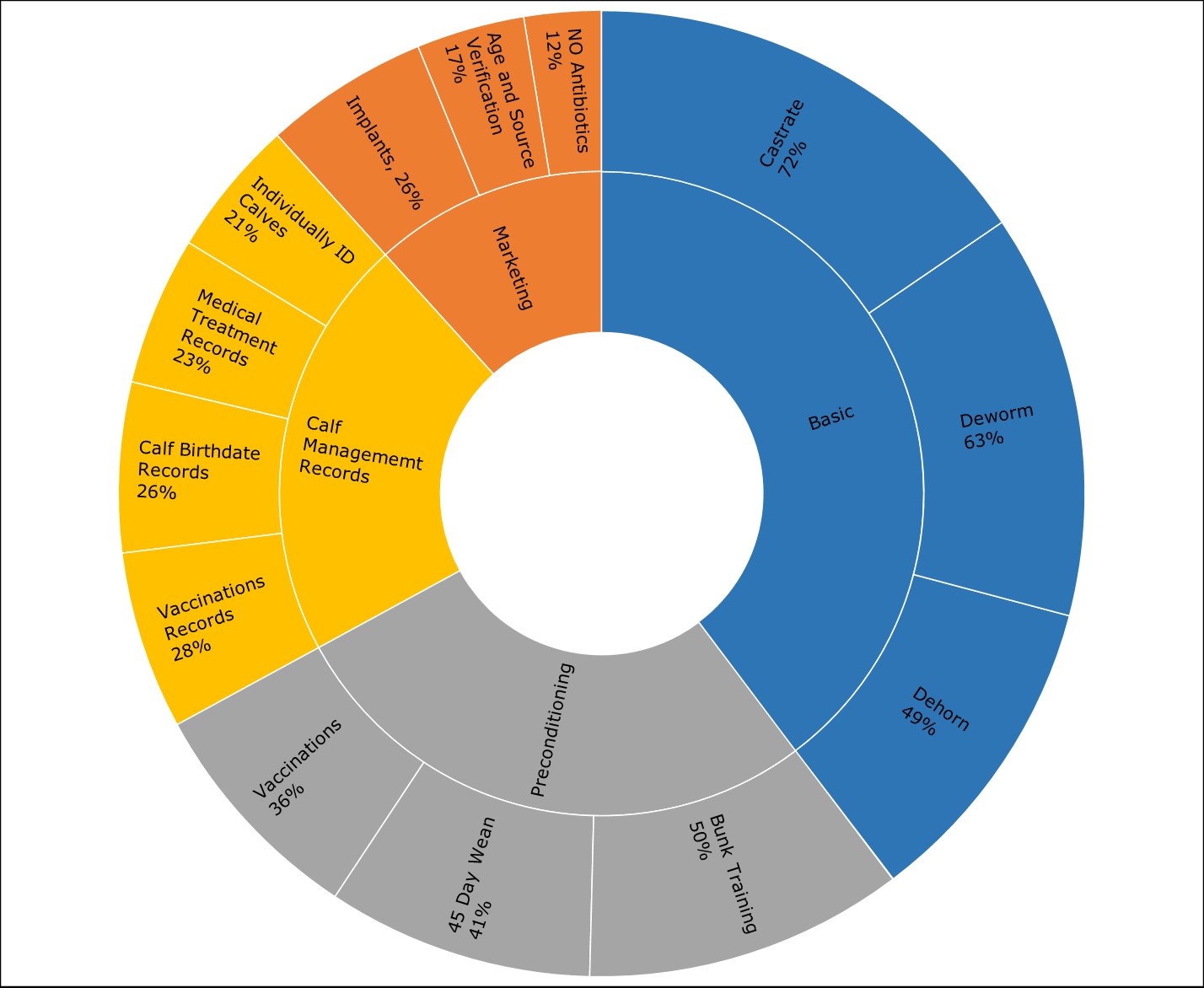
Figure 1. Producer adoption rate across category and individual recommended practices.
Relatively low adoption rates for record keeping are problematic for multiple reasons. For example, the results indicate that cow/calf producers adopt individual practices that can be bundled for preconditioning at higher rates than they adopt record keeping practices that document those practices for use in marketing calves. Thus, some producers are implementing important calf health practices for which they be unable to reap the full value at marketing. Keeping records regarding those practices is a seemingly simple added step.
Constraints to Adoption
Not only is it important to document the extent of non-adoption for recommended management practices, but it is also important to understand why producers choose not to heed those recommendations. Non-adopters responding to the survey were asked to identify primary constraints to practice adoption across multiple practices, including the four categories of calf management recordkeeping practices identified above. Table 1 summarizes non-adopters’ possible constraint choices, grouped into different factor categories. The results highlight findings with respect to record-keeping for vaccinations, medical treatment, birth records and individual identification of calves. Non-adopters are defined as those producers who indicated that they do not implement the specific practice in their operation. In the figures that follow (Figures 2-5), non-adopting producers could check more than one item within a category and each figure summarizes all responses.
Table 1. Constraints to practice adoption by category.
|
Finance Factors
|
|
Doubt Returns/Premiums
|
|
Technical Education
|
|
Management
|
Vaccination Records
Documentation of dates and products for all vaccinations given can be used strategically in decisions farther along the food production chain. Vaccination records are also required for certified preconditioning programs. While they may not seem important if not used in marketing, they can be valuable to future management decision-making. If calves are vaccinated, recording is a minor additional step. As noted in Figure 1, only 28% of producers who responded to the survey keep vaccination records.
Figure 2 summarizes producer responses regarding the constraints to keeping vaccination records, with the bar representing the percentages of producers responding within a contraint category. The technical education category received the most responses at 37%, with 14% of responses related to doubts about returns to keeping vaccination records. Management concerns represented only 7% of responses.
These results suggest that the primary educational need of producers with respect to keeping vaccination records is specific examples of what information to document in addition to education on how to use the information in management decisions.
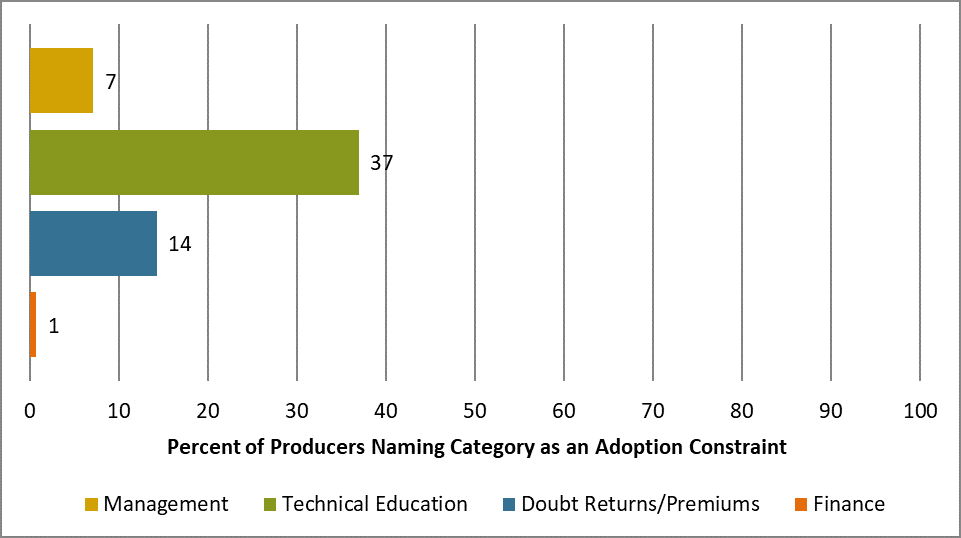
Figure 2. Constraints to keeping vaccination records for non-adoptors (%).
Medical Treatment Records
Medical treatment records involve documenting dates and type of all medical treatments given to the animals. As with vaccination records, keeping medical treatment records can also help manage health costs (Waters, 2012). Although a direct value is difficult to attribute to record keeping, its worth in management assistance is key. Overall, only 23% of producers reported keeping medical records (figure 3). This is of concern, particularly given that this low adoption rate may translate beyond calves to the herd. As older animals are culled from the herd and potentially headed for slaughter, the possibility of violating treatment withdrawal times is problematic.
Figure 3 shows again that technical education appears to be a need. Nearly half of the responses to constraint identification for medical treatment records are in the technical education category (45%), followed by 20% in the doubt returns/premiums category and 10% in the management category. This suggests that producers may be unsure about which medical treatments should be documented, which details should be included in that documentation, and how to use the information in management decisions to improve profitability.
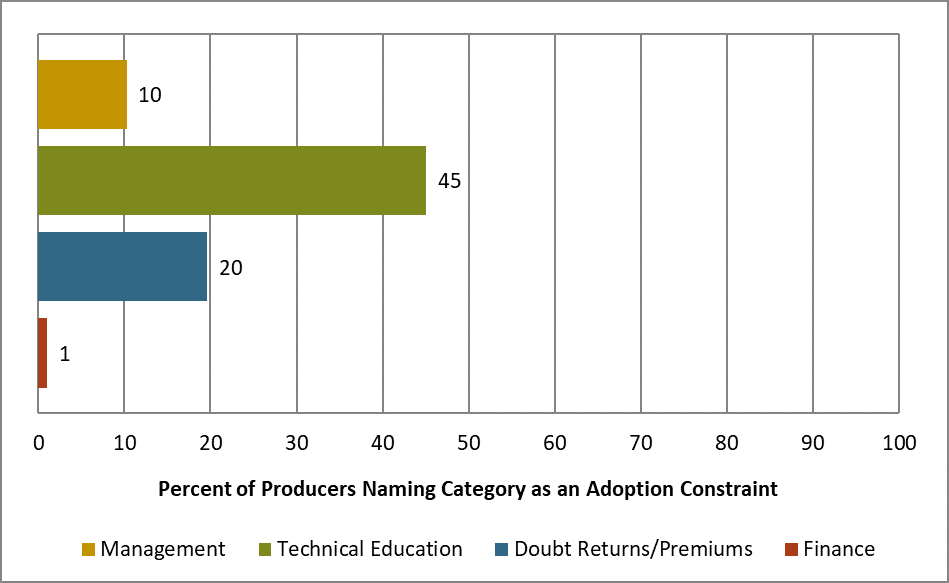
Figure 3. Constraints to keeping medical records for non-adoptors (%).
Birth Records
Birth records for calves are simple to keep, but require regular attention, especially if the calving season is year-round, which is true for approximately two thirds of Oklahoma producers (Boline, 2016). Calving dates can show herd productivity on an annual basis and can be useful when selecting replacement heifers. Recording birth and weaning weights of calves can also aid in future management decisions (Waters, 2012). Birth record information may facilitate culling heifers and cows that tend to calve outside of a producer’s desired calving window, that produce calves with lower weaning weights, or that have trouble calving in general.
Overall, only 26% of producers claim they keep birth records of calves (Figure 4). This is approximately the same percentage that keep vaccination and medical records. Figure 4 shows that with regards to maintenance of birth records, the non-adopters cited doubts about returns and premiums most frequently (25%) with management and technical education concerns noted less frequently at 15% and 14%, respectively. The combination of responses to doubt returns/premiums and management suggests that if producers do not perceive a positive return to their time spent documenting birth records, they choose not to keep them.
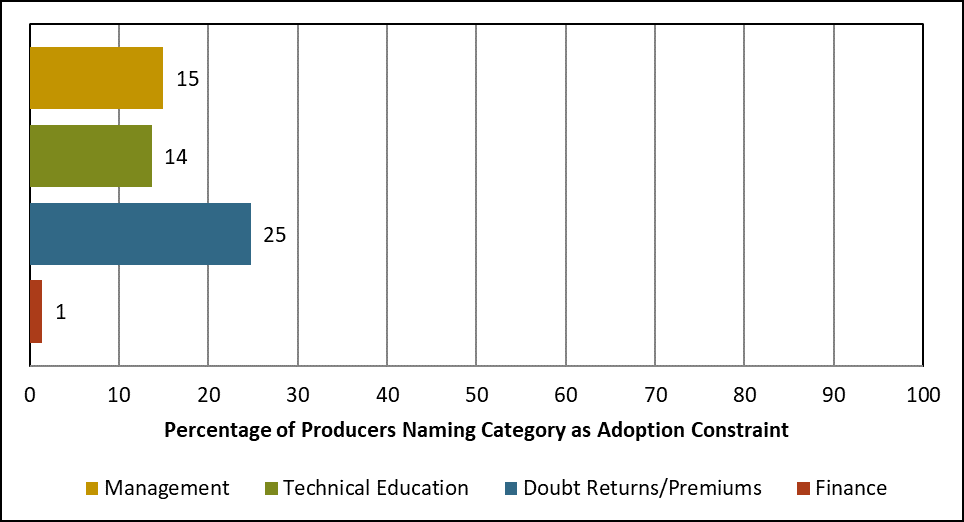
Figure 4. Constraints to keeping birth records for non-adoptors (%).
Individual Identification
Individual calf identification usually refers to assigning a numbered ear tag, numbered ear tattoo, RFID chip or some other form of identification to each individual calf. Only 21% of surveyed producers individually identify calves in their cow/calf operation (Figure 5). Figure 5 illustrates non-adopter responses regarding constraints for individual calf identification. As with constraints to vaccination records and medical treatment records, technical education dominated the responses of non-adopters of individual calf identification at 41%, with doubt returns/premiums at approximately half that rate (19%) and management issues at 14%.
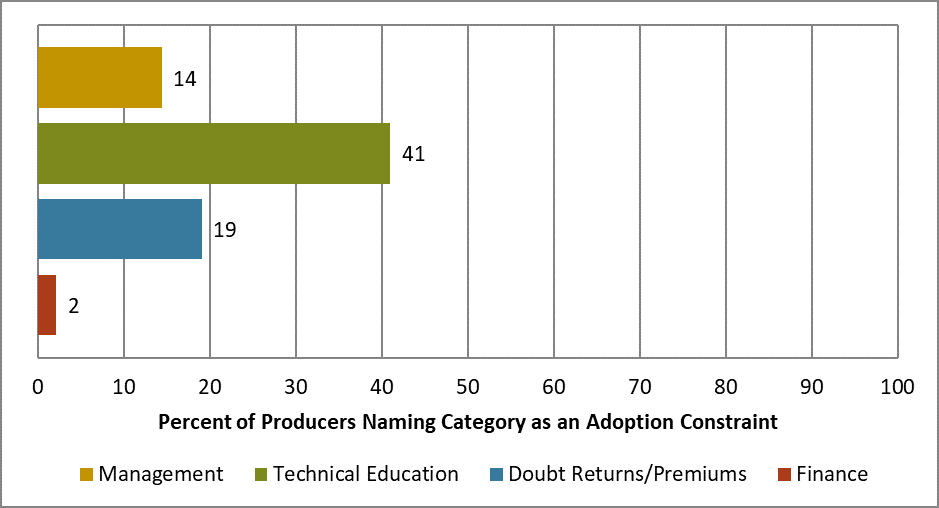
Figure 5. Constraints to individual calf identification for non-adoptors (%).
Conclusions
Record keeping can be an integral asset in a producer’s quest for profitability. Production and health records provide a basis for comparison of animal and herd performance across years, enabling specific targets for improvement. It also allows producers to see how they compare to others in the industry. Records can be used to calculate and compare health maintenance costs across animals, as well as unit cost of production (Berger, 2017). Further, in the event of a disaster, these records may serve as documentation to establish eligibility for indemnity benefits from livestock losses. Summary results from this survey suggest that many producers do not fully comprehend the role that some records can play in decision making and, thus, in increased success, as many indicate that they doubt the returns or premiums that may come from keeping specific records on calf vaccinations, medical treatments, and birth dates as well as for individually identifying calves. The most striking results are in the area of technical education, as it is the most cited constraint category across record keeping practices, with the exception of calf birth records. Overall, the results suggest a strong need for extension programming that educates producers specifically on what information is important to document, how to document it, and how to use that information to improve decision making and, ultimately, profitability.
References
Berger, A. (2017). Profit tip: Unit cost of production for a cow-calf enterprise. Nebraska Institute of Agriculture and Natural Resources, UNL Beef. https://beef.unl.edu/unit-cost-production-cow-calf-enterprise
Boline, A. (2016). Essays on beef calf management practices and the market value of seller reputation. Unpublished M.S. Thesis, Department of Agricultural Economics, Oklahoma State University.
Dalstead, N.L. and Gutierrez, P.H. (1991). Evaluating profitability of the cow herd: basics of financial record keeping.” Proceedings, The Range Cow Beef Symposium XII. Retrieved from: https://digitalcommons.unl.edu/cgi/viewcontent.cgi?referer=https://www.google.com/&httpsredir=1&article=1252&context=rangebeefcowsymp
Raper, K.C., Lalman, D., Peel, D., Doye, D., and Richards, C. (2010). Oklahoma Beef Management and Marketing Survey. Oklahoma State University Institutional Research Board Approval #OSU-AG094. Oklahoma State University, Stillwater, OK.
United States Department of Agriculture, Animal and Plant Health Inspection Services. (2011). Record-keeping Practices on U.S. Beef Cow-calf Operations. Retrieved from: https://www.aphis.usda.gov/animal_health/nahms/beefcowcalf/downloads/beef0708/Beef0708_is_RecordKpg.pdf.
United States Department of Agriculture, National Agricultural Statistics Service. (2014). 2012 Census of Agriculture: Selected Operation and Operator Characteristics: 2012 and 2007. Retrieved from: http://www.agcensus.usda.gov/Publications/2012/Full_Report/Volume_1,_Chapter_2_US_State_Level/st99_2_045_045.pdf
Waters, K. (2012). Production records for the commercial cow herd. South Dakota State University iGrow. Retrieved from: http://igrow.org/livestock/beef/production-records-for-the-commercial-cow-herd/.
Watt, D.L., Lippke, L. and Walker, O. (1991). Records systems for beef farmers/ranchers. In Batte, M. T., editor. North Central Regional Research Publication 339. Ohio Agricultural Research and Development Center Special Circular 149. The Ohio State University.
Williams, B.R., Raper, K.C., DeVuyst, E.A., Peel, D., Lalman, D., Richards, C., Doye, D. (2013). Demographic factors affecting the adoption of multiple value-added practices by Oklahoma cow-calf producers. Journal of Extension, 51(6), 6FEA7.
Acknowledgments
Authors acknowledge funding support from the Oklahoma Cooperative Extension Service and the Departments of Agricultural Economics and Animal Science at Oklahoma State University. This material is also based upon work that is supported by the National Institute of Food and Agriculture, U.S. Department of Agriculture, Hatch project #OKL02943 under Accession No. 1004522 and by the Agriculture and Food Research Initiative Competitive Grant #2017-68006-26344 from the USDA National Institute of Food and Agriculture.
